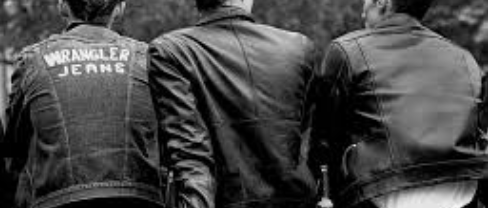The Timeless Allure of the Leather Bomber Jacket

The leather bomber jacket, an icon of fashion that has transcended generations, is a symbol of rebellion, adventure, and enduring style. With its origins rooted in military history, this distinctive piece of outerwear has evolved into a fashion statement that continues to captivate both men and women. In this exploration, we’ll delve into the rich history, design elements, versatility, and enduring appeal of the leather bomber jacket.
A Glimpse into History
The leather bomber jacket’s history can be traced back to the early 1900s, with its initial design rooted in military aviation. Pilots during World War I needed a reliable, insulated jacket to protect them from the frigid altitudes in open cockpits. This need gave birth to the “flight jacket,” which would later become known as the bomber jacket.
Practical Design Elements
The design of the bomber jacket is a testament to both form and function:
- Zippered Front: The zipper closure provided quick and easy access for pilots, even when wearing gloves.
- Ribbed Collar and Cuffs: These snug, rib-knit elements helped seal in warmth and keep out the wind.
- Pockets: Ample pockets allowed pilots to store essential items within reach during flights.
- Durable Materials: Leather, renowned for its durability and natural insulation, was the primary choice for the outer shell.
Iconic Variations
Several iconic variations of the leather bomber jacket have emerged over the years, each with its own unique style and history:
A1 Flight Jacket (1927): The A1 flight jacket, with its button-front closure and knit cuffs, was one of the earliest iterations. It served aviators during World War I and provided much-needed warmth and protection.
A2 Flight Jacket (1940): The A2 flight jacket, a significant evolution, introduced the zipper closure and a ribbed collar. It became the quintessential bomber jacket during World War II, worn by American aviators.
B3 Bomber Jacket (1934): The B3 bomber jacket, with its distinctive sheepskin lining, was designed for extreme cold weather. It became essential for bomber crews during high-altitude missions in World War II.
B6 Jacket (1939): The B6 jacket, introduced just before World War II, was designed for extreme cold. It featured a shearling lining and a button-front closure, ensuring warmth and comfort.
D1 Jacket (1937): The D1 jacket, characterized by its shearling collar and frontal buttons, was utilized by the U.S. Army Air Forces during World War II, particularly by pilots and aircrews.
Versatility and Styling
One of the leather bomber jacket’s enduring qualities is its versatility. It effortlessly complements various outfits, from casual jeans and boots to more formal ensembles. Its clean lines and structured silhouette lend an air of sophistication to any look.
Cultural Significance
The raf bomber jacket has played a prominent role in popular culture. It’s been embraced by celebrities, from James Dean and Steve McQueen to modern-day icons like David Beckham and Rihanna. Its association with movies, especially in aviation and military contexts, has further solidified its place in fashion history.
Conclusion
In conclusion, the leather bomber jacket is more than just an article of clothing; it’s a symbol of resilience, adventure, and enduring style. Its rich history, practical design, versatility, and cultural significance make it a piece of fashion that continues to stand the test of time. Whether you wear it for its history, its warmth, or its undeniable cool factor, the leather bomber jacket remains a timeless classic that effortlessly combines both style and substance.




